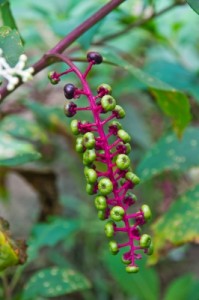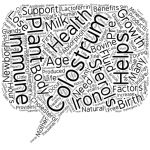
Ginseng is an established herbal tonic which has been in use for over 5,500 years in China, Korea and parts of Japan. It has become one of the most popular herbal medicines worldwide. All ginseng is prepared from the roots.
Plants Used
There are a couple of plant species used, Asian Ginseng (Panax ginseng Meyer), Japanese Ginseng (Panax pseudo-ginseng Meyer) and American Ginseng (Panax quinquefolius L.) which have varying levels of actives and medicinal properties. Panax means ‘cure-all in latin and the Ginseng group of herbs has gained tremendous popularity for the range of calming activities that are ascribed to these plants. All the plants are members of the Araliaceae family.
Chinese Ginseng (Notoginseng)
One other ginseng of note is Chinese ginseng or notoginseng (Panax notoginseng). In Chinese it is called tiánqī (田七), tienchi ginseng, sānqī (三七) or sanchi, three-seven root, and mountain plant.
This plant grows widely in Japan and China where it is cultivated in and around rough forest areas. generally the wild plants have the highest concentrations of the key actives needed for medical benefits.
Appearance:
The herb is a perennial with dark green leaves branching from a stem with a red cluster of berries in the middle. The Chinese reference to three-seven root comes from the three petioles with seven leaflets surrounding each. The root is traditionally harvested between three and seven years old which also might explain the common name.

Uses For Ginseng
Taking Ginseng is now increasingly popular in Western cultures where it is imbibed as a tea. In Chinese medicine, Chinese ginseng is often described as warming in flavour with a sweet but slightly bitter aftertaste. There are no toxic elements associated with this plant or with ginseng species generally.
Ginseng is often ground into a powder before swallowing directly or mixed with water. Most people take between 1 and 3g of powdered ginseng to obtain the benefits it offers (Bensky et al., 2004).
The actives are well established and now being exploited for the opportunities they offer in energy modulation, reducing stress, as an anti-bacterial, minimising inflammation and even acting against virus. There is some documented evidence for benefits associated with treating hormone and endocrine conditions, the immune system and even cardiovascular conditions. It’s worth reading the research articles by Attele et al., (1999), Gillis (1997) and Lee et al., (2011). It is also being investigated for its anti-mutagenic properties.
The active componentry covers polysaccharides, peptides, polyacetylenes, fatty acids, the ginsenosides (an interesting group of compounds in their own right) and various polyacetylenic alcohols. P. notoginseng contains the dammarane-type ginsenosides as major constituents. These can be divided further into a complex classification system. Dammarane-type ginsenosides include 2 basic classifications: the 20(S)-protopanaxadiol (ppd) and 20(S)-protopanaxatriol (pptt) types.
P. notoginseng contains high levels of Rb1, Rd (ppd classification) and Rg1 (ppt classification) ginsenosides. The Rb1, Rd and Rg1 content of P. notoginseng is found to be higher than that of P. ginseng and P. quinquefolius according to one study (Shu Zhu et al., 2004).
Mood Benefits Of Ginseng
Several studies have looked at the effects of ginseng on mood using the Bond-Lader mood scales. There are 3 mood factors: alert, calm and contented to consider. Reported effects include increased subjective feelings of alertness and decreased feelings of mental fatigue. Studies have also shown other interesting findings: a decrease in the alertness factor when 200 and 400mg ginseng (Kennedy et al 2001) was administered, whereas others showed an increase in vigour measured using POMS (Ussher et al., 1995) and decreased feelings of fatigue as measured by VAS (Reay et al., 2006). In a more recent study, 200mg led to improved self- reported ratings of calmness at different time points following ingestion on the first and last day when measured. A 400mg dose improved calmness on day 1 only at 2.5 and 4 hour time points (Reay et al., 2010). However, other studies have shown no effect on mood as measured by POMS and PANAS (Cardinal and Engels, 2001). The evidence as it currently stands is inconsistent and so does not allow for definite conclusions to be made but it is still a popular supplement for treating mood.
Red & White Ginseng
An important commercial variant is Red Ginseng. This is produced by steaming fresh ginseng and drying it. Other modifications include fermenting with skinned ginseng which produces new therapeutic compounds. White ginseng is simply dried fresh ginseng and is claimed to be not as effective as the red version.
Red ginseng has a complex sensory profile composed of perfumed, floral and earthy notes (Lee et al., 2005). The main component, saponin in red ginseng is altered because of the repeated steaming and fermentation (Li et al., 2008). The level of ferulic acid also rises with steam processing (Rukmini, 2003). One of the issues which I will return to is the variability of preparations containing ginseng and investigated over ten years ago (Harkey et al., 2001).
Use Of Ginseng To Regulate Blood Lipid Levels
P. ginseng is now being used as therapeutic agent to treat diseases associated with lipid metabolism. A number of studies have looked at treatment of hyperlipidemia which is the situation in the body when the blood fat levels are above normal (Yamamoto and Kumagai, 1982; Yamamoto et al., 1983a,b; Sakakibara et al., 1975; Park et al., 2008; Xiong et al., 2010).
The condition is often a consequence of serious health conditions. The liver is the key regulator of blood lipid levels. It is now thought that a fermented form of P. ginseng using solid-state fermentation akin to composting could lower fats or triglycerides. these studies have been conducted in mice but there is considerable interest in establishing clinical studies.
Products
Please note this page contains links to our affiliate marketing partner – Amazon. Please read our affiliate disclosure.
Legal Disclaimer Concerning Products On This Web-Site
The products and the information provided about specific products on or through this site have not been evaluated by the United States Food and Drug Administration or by any other national regulatory body and are not intended to diagnose, treat, cure or prevent disease. The information provided on this site is for informational purposes only and is not intended as a substitute for advice from your physician/doctor or other health care professional or any information contained on or in any product label or packaging. You should not use the information on this site for diagnosis or treatment of any health problems or for prescription of any medication or other treatment. You should consult with a healthcare professional before starting any diet, exercise or supplementation program, before taking any medication or if you suspect you might have a health problem.
References
Attele, A.S., Wu, J.A., Yuan, C.S. (1999) Ginseng pharmacology: multiple constituents and multiple actions. Biochem. Pharmacol 58(11) pp. 1685–93
Bensky, Dan; Clavey, Steven; Stoger, Erich, and Gamble, Andrew. (2004) Chinese Herbal Medicine: Materia Medica, Third Edition.
Cardinal, B. J., & Engels, H. J. (2001). Ginseng does not enhance psychological well-being in healthy, young adults: results of a double-blind, placebo-controlled, randomized clinical trial. J. Amer. Dietetic Assoc., 101(6), pp. 655-660.
Gillis, C.N. (1997) Panax ginseng pharmacology: a nitric oxide link? Biochem Pharmacol 54(1) pp. 1–8.
Harkey, M.R., Henderson, G.L., Gershwin, M.E., Stern, J.S., Hackman, R.M. (2001) Variability in commercial ginseng products: an analysis of 25 preparations. Am. J. Clin. Nutr. 73 pp. 1101-1106
Joo, I.W., Ryu, J.H., Oh, H.J. (2010) The influence of Sam-Chil-Geun (Panax
notoginseng) on the serum lipid levels and inflammations of rats
with hyperlipidemia induced by poloxamer-407. Yonsei Med J
51pp. 504–510
Kennedy, D.O., Scholey, A.B., Wesnes, K.A. (2001) Dose dependent changes in cognitive performance and mood following acute administration of ginseng to healthy young volunteers.
Lee, S.K., Kim, J.H., Sohn, H.J., Yang, J.W. (2005) Changes in aroma characteristics during the preparation of red ginseng estimated by electronic nose, sensory evaluation and gas chromatography/mass spectrometry. Sens. Actuators B Chem 106 pp. 7–12.
Lee, M.H., Lee, B.H., Jung, J.Y., Cheon, D.S., Kim, K.T,, Choi. C.(2011) Antiviral effect of Korean red ginseng extract and ginsenosides on murine norovirus and feline calicivirus as surrogates for human norovirus. J. Ginseng Res. 35(4): pp. 429–35.
Li, H., Lee, J.H., Ha, J.M. (2008) Effective purification of ginsenosides from cultured wild ginseng roots, red ginseng, and white ginseng with macroporous resins. J. Microbiol. Biotechnol. 18(11) pp. 1789–91
Park S, Ahn IS, Kwon DY, Ko BS, Jun W (2008) Ginsenoside Rb1
and Rg1 suppress triglyceride accumulation in 3T3-L1 adipocytes
and enhance b-cell insulin secretion and viability in Min6 cells
via PKA-dependent pathways. Biosci Biotechnol Biochem 2008;
72:2815–2823.
Rukmini, C. (2003) Phytochemical products: Steamed ginseng bran. In: Johnson I,Williamson G, editors. Phytochemical functional foods. New York, NY: Woodhead Publishing Ltd./CRC.
Shu Zhu; et al. (2004). Comparative study on triterpene saponins of ginseng drugs. Planta Medica. 70 (7): 666–677. doi:10.1055/s-2004-827192. PMID 15303259.
Ussher, J., Dewberry, C., Malson, H., Noakes, J. (1995) The relationship between health related quality of life and dietary supplementation in British middle managers: a double blind placebo controlled study. Psychol. Health 10 pp. 97-111
Xiong Y, Shen L, Liu KJ, et al.: (2010) Antiobesity and antihyperglycemic
effects of ginsenoside Rb1 in rats. Diabetes
59 pp. 2505–2512.
Reay, J.L., Kennedy, D.O., Scholey, A.B. (2006) Effects of Panax ginseng, consumed with and without glucose, on blood glucose levels and cognitive performance during sustained mentally demanding tasks. J Psychopharmacology 20 pp.771-81
Reay, J.L., Scholey, A.B., Kennedy, D.O. (2010) Panax ginseng (G115) improves aspects of working memory performance and subjective ratings of calmness in healthy young adults. Human Psychopharmacology 25 pp. 462-471
Sakakibara K, Shibata Y, Higashi T, Sanada S, Shoji J. (1975) Effect of
ginseng saponins on cholesterol metabolism. I. The level and the
synthesis of serum and liver cholesterol in rats treated ginsenosides.
Chem Pharm Bull. 23 pp. 1009–1016.
Yamamoto, M., Kumagai, A. (1982) Anti-atherogenic action of Panax ginseng in rats and in patients with hyperlipidemia. Planta Med. 45 pp. 149
Yamamoto M, Kumagai A, Yamamura Y (1983a) Plasma lipid-lowering action of ginseng saponins and mechanism of the action. Am. J. Chin. Med. 11 pp. 84–87.
Yamamoto M, Uemura T, Nakamura S, Uemiya M, Kumagai A. (1983b) Serum HDL-cholesterol-increasing and fatty liver-improving actions of Panax ginseng in high cholesterol diet-fed rats with clinical effect on hyperlipidemia in man. Am. J. Chin. Med. 11 pp. 96–101
This article was revised on the 24th April 2018 to include new information relating to the lipid lowering benefits of Ginseng.



I’ve only been using this ginseng in the form of capsules for about 3 weeks and noticed an increase in energy levels, less moodiness, less fatigue. However, I’m still tackling my sleeping issues. I heard this shouldn’t be taken long term so after about 6 months I will give myself a break for a month and hopefully re-continue.